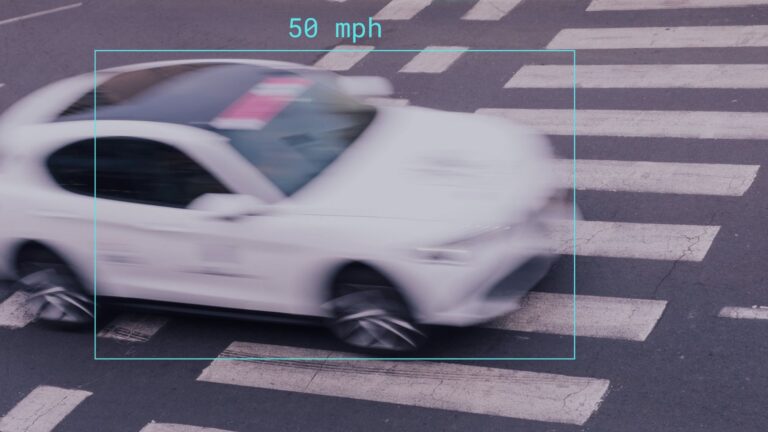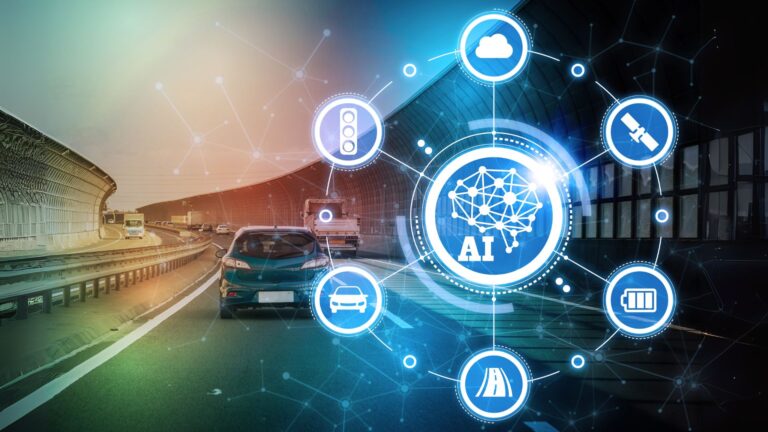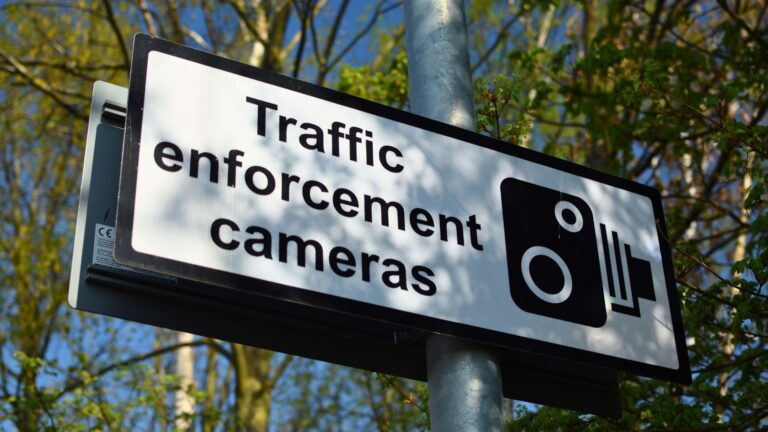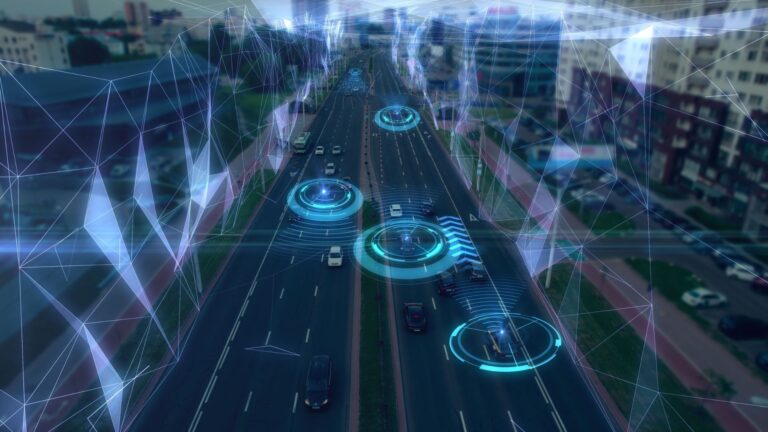Autonomous vehicles (AVs) are becoming a familiar presence on roads across North America, offering the potential to drastically reduce human error and improve traffic safety. But while their technology is advancing, AVs still face significant challenges in navigating complex, unpredictable environments. Areas like school zones, construction sites, and locations with high numbers of vulnerable road users (VRUs) often involve nuanced decisions, temporary changes, or human behaviors that AVs aren’t fully equipped to interpret or respond to just yet.
This blog explores how traffic law compliance may evolve in the age of automation, what automated traffic enforcement (ATE) looks like when AVs and human-driven vehicles share the road, and how traditional infractions like distracted driving and DUI might shift. We’ll also examine the latest research, forecasts, and what it all means for safety enforcement moving forward.
Trends & Data: AVs and Safety So Far
- A study by Waymo + Swiss Re found that over 25.3 million autonomous miles driven in cities like Phoenix, San Francisco, Los Angeles, and Austin resulted in 88% fewer property damage claims and 92% fewer bodily injury claims compared with human driving baselines.
- In mixed‑traffic settings, research shows that safety improves once AV penetration passes certain thresholds. For example, in freeway merging areas, when AVs make up more than approx. 20% of traffic, reductions occur in conflict rate, time‑to‑collision (TTC), and severity of incidents.
- The market for AVs is expected to grow rapidly. According to ResearchAndMarkets, the global AV market size is projected to grow from US$87.2B in 2024 to nearly US$991.7B by 2033.
Traffic Law Compliance in a Mixed Traffic Future
1. Rules & Legal Norms
- AVs are programmed to follow rules (speed limits, stop signs, etc.), but laws may need to be more precisely codified. For example, how should AVs handle ambiguous signage or faded lane markings?
- Enforcement: Distracted driving and DUI laws will need to evolve. If an AV is in full control, should phone use or alcohol impairment of passengers be penalized the same way? Possibly not, but laws will need to cover handover transitions and driver responsibility in semi-autonomous modes.
- Insurance and liability will also shift, with accountability possibly shifting to manufacturers or software developers when AVs are in full control.
2. Automated Traffic Enforcement (ATE)
- ATE systems (speed cameras, red light cameras, school zone enforcement, etc.) will need to evolve to address both AV and HDV (human-driven vehicle) behaviour.
- Mixed traffic means that enforcement systems must adapt to identify violations from both AVs and human drivers. Even AVs may violate laws due to sensor issues, software bugs, or unexpected scenarios.
- ATE will remain critical in high-risk zones like school zones, work zones, and pedestrian-heavy areas where vulnerable road users (VRUs) are present.
- Automated traffic enforcement may also need to evolve to detect new kinds of violations related to AVs, for instance when a driver fails to respond promptly to a takeover request, when an AV handles an emergency poorly, or when it mis-navigates temporary road changes like construction detours.
Distracted Driving, DUI, and AVs
- Distracted driving laws will likely change. In full AV mode (Level 4/5), occupants may not need to be engaged in driving, but during handover transitions, distraction still matters.
- DUI laws may also evolve. If a vehicle is truly autonomous, the role of the impaired passenger becomes less critical. However, in semi-autonomous systems or when handover occurs, impaired users may still pose danger.
- As long as non-autonomous vehicles are on the road, traditional laws must remain in force for all human-driven vehicles. ATE technologies will continue to monitor and deter distracted and impaired driving effectively.
How Automated Traffic Enforcement Will Evolve
As AVs become more common, the tools used to monitor traffic violations will also need to become smarter and more adaptable:
- Smarter systems: Future enforcement technology could link directly with AV data systems. This would help verify whether a traffic rule was actually broken, log what happened, and even prevent violations from happening in the first place.
- Responsive enforcement zones: Automated enforcement will likely be able to react even more intelligently based on time of day, traffic flow, or even weather. For example, enforcement might tighten during school arrival times or when roads are slick from rain.
- Better coverage of unusual situations: Many safety problems happen in tricky or unexpected situations, like construction zones or when road signs are hard to see. ATE can help ensure that both human drivers and AVs follow the rules in these higher-risk areas.
- AI-powered insights: With artificial intelligence, cities could start detecting patterns, like which intersections are most prone to red-light running, and use that information to guide where and how enforcement is applied. This could help prevent accidents before they happen, especially in areas where human and autonomous drivers interact.
AVs and ATE: Harnessing New Technologies for Safer Roads
Autonomous vehicles promise massive reductions in crashes and injuries caused by human error. The data already supports their safety potential. However, with decades of mixed traffic ahead, enforcement remains essential to bridge the gap between legacy driving risks and AV reliability.
ATE will continue playing a pivotal role, especially in areas with high pedestrian activity and VRU risk. Speeding, red-light running, and other unsafe behaviors will still need deterrence, even as more vehicles self-regulate.
Ultimately, a future with AVs offers a powerful vision of safer roads. As this vision takes shape, Automated Traffic Enforcement will continue to evolve, shifting from enforcement focus on proactive safety through real-time data, smart analytics, and adaptive technologies. In this new era of mobility, ATE will play a key role in preventing incidents before they occur and ensuring all road users are protected, especially in sensitive environments.






